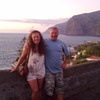Posted 10 years ago
 cogito
cogito
(124 items)
KPM twisted form porcelain vase, circa 1900s, with luxurious and colorful Hermann Seger oxblood glaze. Dimensions: 9.25" (H) x 4.25" (W).
-------------------
KPM (Königliche Porzellan-Manufaktur or Royal Porcelain Manufactory, Berlin) has a storied history extending back to 1753, when Frederick II permitted Wilhelm Caspar Wegely to open a porcelain manufacturing business. But, it wasn't until the late 1870s that the company ventured into organic glazes and design that was to signal the coming of the Jugendstil.
The manufactory associated with a Chemical-Technical Research Institute in 1878, and the institute's director, Hermann August Seger (1839-1893), produced numerous glaze and firing innovations that substantially increased KPM’s proficiency in designing moulds and working with colours. Among his many inventions, Seger developed new kinds of under glaze colours. Oxblood-, celadon-, crystal- and dripped glazes were created, inspired by Chinese ceramics, and they enabled new forms of artistic expression, making Seger an early pioneer of the Art Nouveau aesthetic.
In 1908, Theodor Schmuz-Baudiss became KPM artistic director, and he promoted the use of Seger’s glazes, bringing KPM further fame and admiration at international art exhibitions.

































Hi, Idcloisonne. Depending upon the region of the world, I think it is reasonable to say that ceramic and glass design from that period shared similar source inspirations (e.g., nature, symbolism, organic forms, etc.).
I love this one... well, the whole collection!!!
wow cogito, love it glazed like dalpayrat works, never seen a kpmpottery like this, great found!
This is very beautiful and reminds me of Dalpayrat red as well. Iron and copper spotting like a tenmoku pottery glaze.
It doesn't surprise me that a few of you mentioned Dalpayrat, because I thought the same thing when I bid upon it at auction. However, the form is not stoneware, being made out of soft paste porcelain. The surface is also too glossy for Dalpayrat. The auction house was located in Berlin, which further reinforces the KPM connection. Thanks all for the loves and kind words.
Really special
It is my understanding that it was the type of porcelain that Seger helped to develop that would allow for greater glaze/coloring effects. Most KPM Seger works have similar thick, glossy glazes, while it was artistic input from Schmutz-Baudiss that guided the choice of forms. I think some of the choice of going with porcelain was due to KPM just wanting to cash in at the time by catering to Jugendstil tastes.
So beautiful, love all the colors!